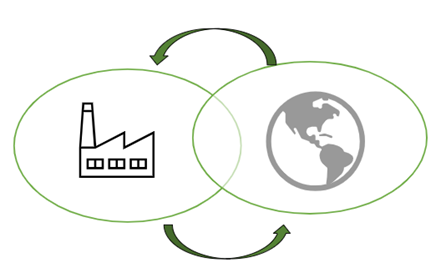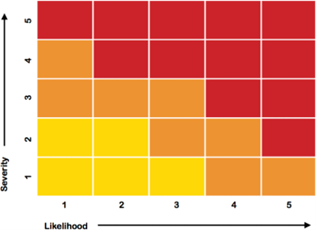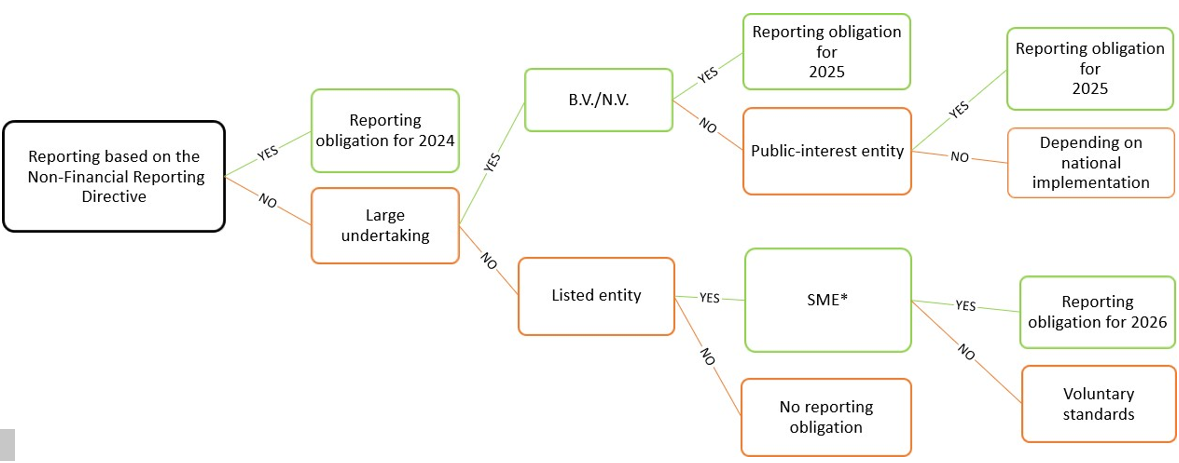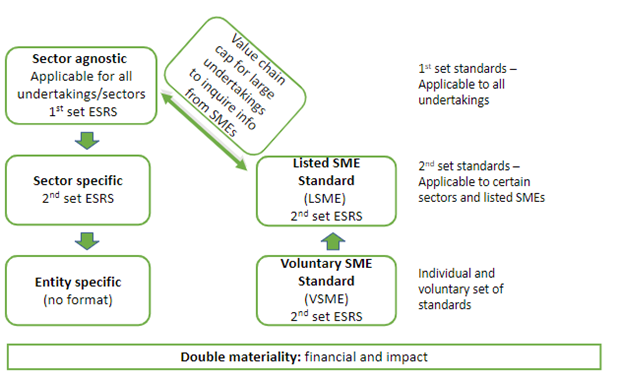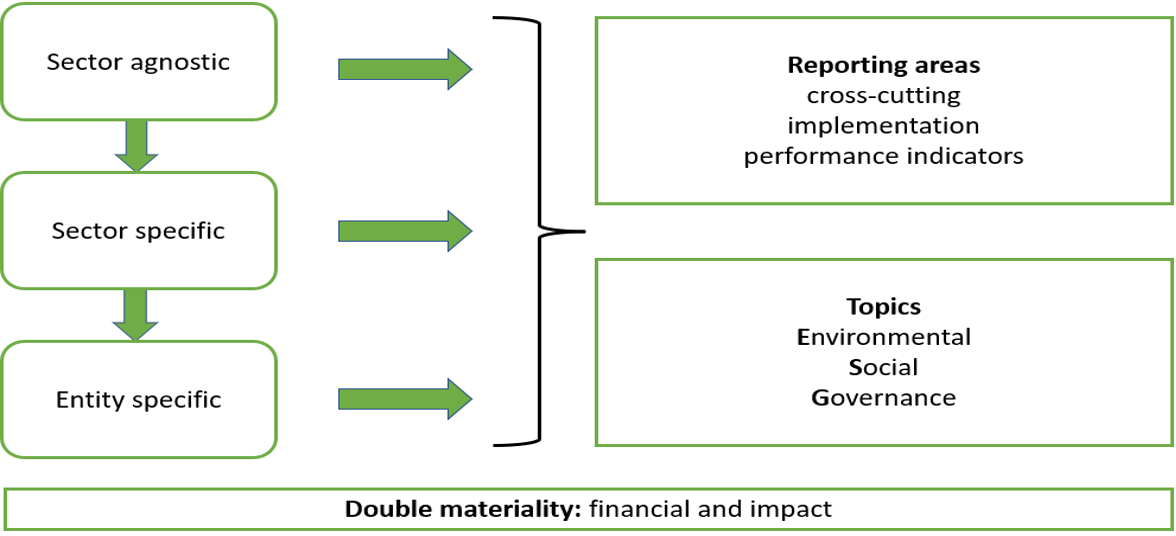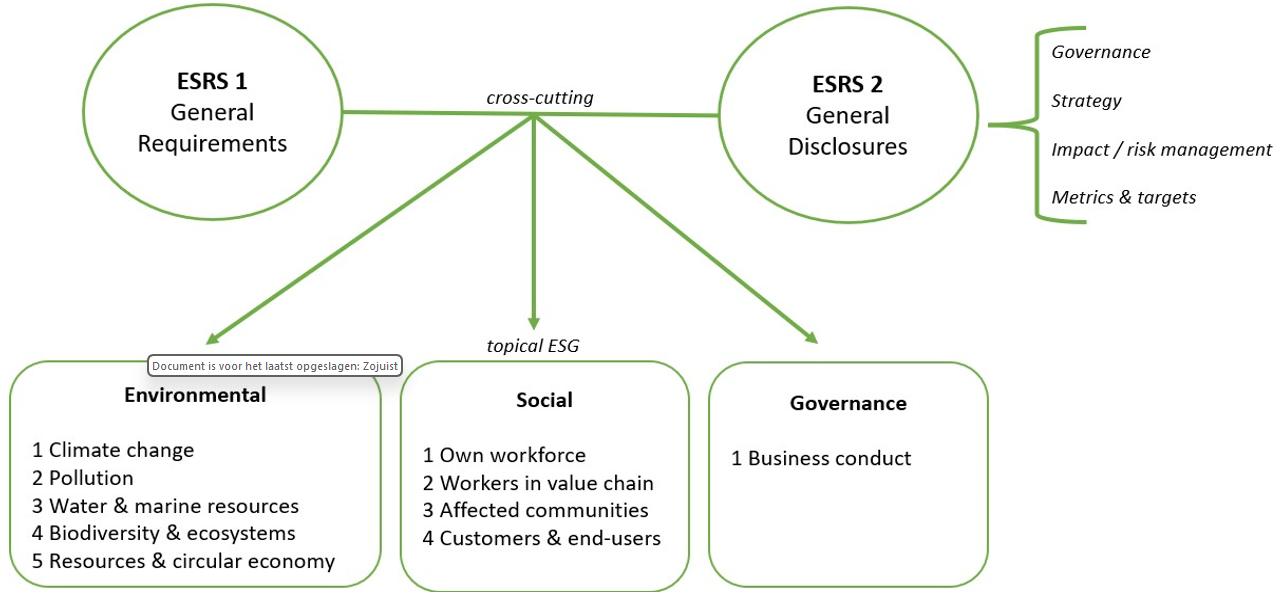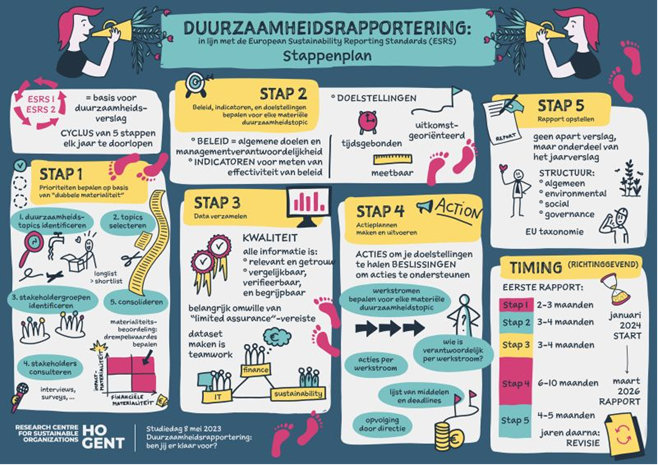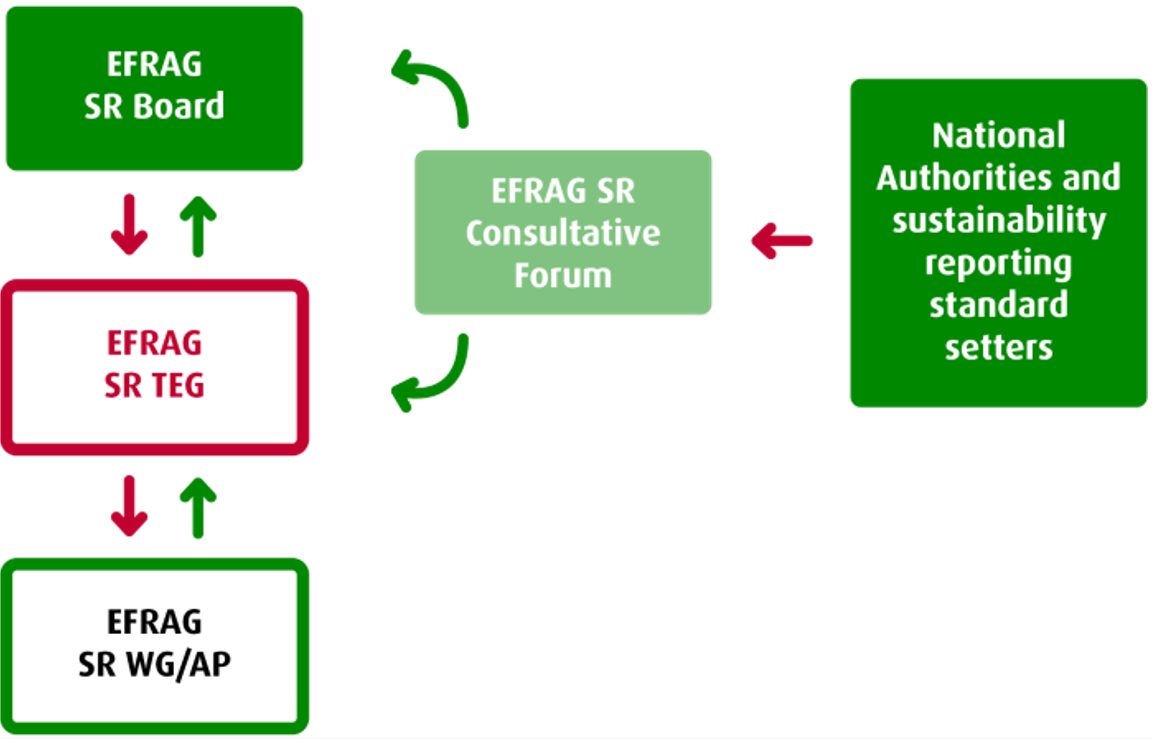The CSRD is one of the initiatives that fits within the European "Green Deal" and other national and international initiatives in the field of International Responsible Business Conduct (IRBC) and sustainability. Below is a selection of sustainability laws or other initiatives and a brief description of the relationship to the CSRD:
Corporate Sustainability Due Diligence Directive (CSDDD):
CSDDD sets out a corporate due diligence duty for large companies to identify and address adverse human rights impacts (such as child labour) and environmental impacts (such as pollution) in their own operations, those of their subsidiaries and in their “chain(s) of activities”. CSDDD makes cross-reference to existing legislation for certain duties. For instance, as regards public communication on due diligence, the Directive relies on the reporting under the Corporate Sustainability Reporting Directive (CSRD), thereby avoiding duplication for companies in the scope of both sets of rules. For the small number of companies not yet covered by the CSRD, it complements existing rules by providing a simplified and aligned reporting framework.
Dutch Corporate Governance Code, and other laws and regulations that give substance to the management report:
The CSRD/ESRS is an addition to the current rules for the management report. Information that is already part of the management report on the basis of other current legislation and regulations will continue to be included. It is intended that the ESRS allow references to avoid duplication. The exact interpretation of this is still unclear.
EU Taxonomy:
The EU Taxonomy is a classification system that clarifies which economic activities can be regarded as environmentally sustainable. Undertakings that fall within the scope of the CSRD must also report, pursuant to Article 8 of the EU Taxonomy, on how and to what extent their business activities are aligned with the EU Taxonomy. Although both the EU Taxonomy and the CSRD address the same environmental topics, they each take a different approach resulting in different reporting requirements
OECD Guidelines for Multinational Enterprises (OECD MNE Guidelines):
This is a standard for responsible business conduct. The OECD Guidelines provide tools for undertakings to deal with issues such as value chain responsibility, human rights, child labor, the environment and corruption. The CSRD and the ESRS explicitly refer to these OECD guidelines in various places, for example that the materiality analysis of a negative impact must be guided by the due diligence process as laid down in the OECD.
Paris Climate Agreement:
The Climate Agreement is an international treaty signed by nearly 200 countries to curb global warming. The European Union has also committed to this and the CSRD is a concrete form of the EU to implement this.
Science Based Targets:
Science Based Targets are CO2 reduction targets that have been assessed as in line with keeping global warming to 1.5 degrees. The ESRS (Climate standard (E1)) also uses 1.5 degrees as a reference point.
For example, the undertaking must report whether the CO2-reduction plans are in line with the 1.5-degree scenario. The institution that can assess undertaking’s plans on this 1.5-degree objective is the Science Based Target initiative (SBTi) - a collaboration between four non-governmental organizations (NGOs), UN Global Compact, the Carbon Disclosure Project (CDP), World Wildlife Fund (WWF) and the World Resource Institute (WRI). Undertakings are not obliged by the CSRD to set targets that are in line with Science Based Targets - but must report whether they have science-based targets.
Standards of the International Sustainability Standards Board (ISSB):
The ISSB is a sister organisation of the IASB (drafter of IFRS: International Financial Reporting Standards). An important starting point of the CSRD and the ESRS is the comparability between undertakings in the EU and to limit the double reporting burden, for example if (also) ISSB standards are used. That is why the European Commission and EFRAG have aimed for interoperability with international standards developed or to be developed by mainly GRI (Global Reporting Initiative) and ISSB (International Sustainability Standards Board). See the ‘ESRS-ISSB Standards Interoperability Guidance’ published by EFRAG and the IFRS Foundation for more information.
United Nations (UN) Guiding Principles on Business and Human Rights (UNGPs):
This is a standard for responsible business conduct. The CSRD and the ESRS explicitly refer to these OECD guidelines in various places.
Regulation banning products made with forced labour:
This bill prohibits the offering of products made with forced labour within the European internal market. The proposal gives the national authorities the responsibility to enforce the law, based on research by means of a ‘risk-based approach’. The CSRD requires companies to report on labour relations, including forced labour, see Social Standard 2.
Regulation on deforestation-free products:
This regulation prohibits the offering of products that contribute to deforestation and forest degradation within the European internal market. This proposal, like the CSRD, falls within the European Green Deal. In addition, the CSRD requires companies to report on ecosystems and biodiversity, see Environmental Standard E4. This regulation prohibits companies from buying or selling products that contribute to deforestation and degradation. To do this, the companies must perform due diligence on their purchasing practices, which must be reported on under the CSRD, and what must be acted upon under this regulation. Companies producing, importing or exporting products or raw materials covered by this regulation must comply with this regulation from 30 December 2024.
Sustainable Finance Disclosure Regulation (SFDR):
Financial market participants who have to report under the SFDR need data from the companies in which investments are made. The CSRD and in particular the ESRS meet this need, as the data required under the SFDR is directly or easily recognizable and findable in the ESRS.
United Nations (UN) Sustainable Development Goals (SDGs):
The United Nations Sustainable Development Goals for 2030 are seventeen goals to make the world a better place. The CSRD can be seen as a practical elaboration of the SDGs to achieve sustainable development of the world through transparency, of which the CSRD is a European approach.


